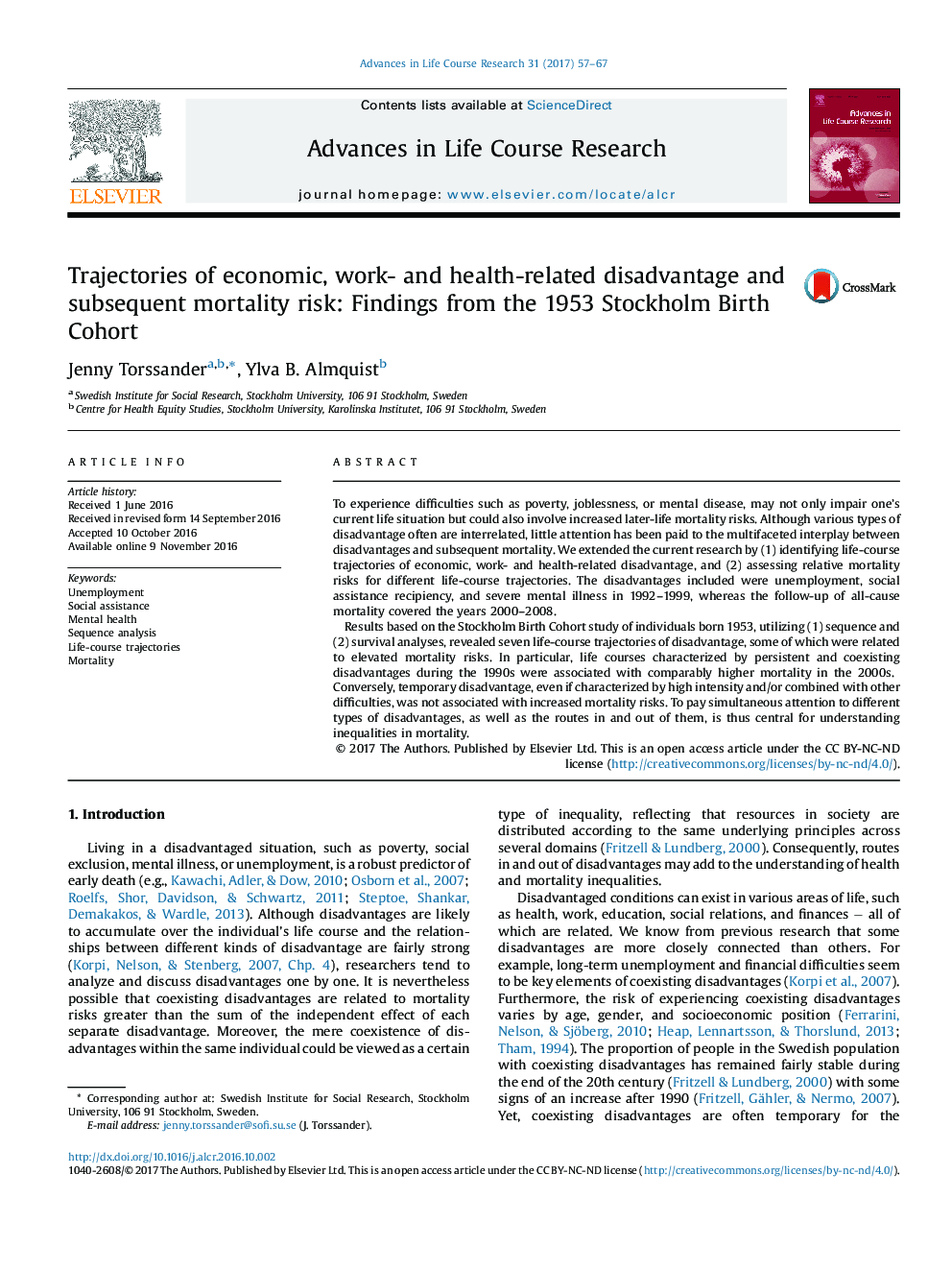| Article ID | Journal | Published Year | Pages | File Type |
|---|---|---|---|---|
| 4929532 | Advances in Life Course Research | 2017 | 11 Pages |
To experience difficulties such as poverty, joblessness, or mental disease, may not only impair one's current life situation but could also involve increased later-life mortality risks. Although various types of disadvantage often are interrelated, little attention has been paid to the multifaceted interplay between disadvantages and subsequent mortality. We extended the current research by (1) identifying life-course trajectories of economic, work- and health-related disadvantage, and (2) assessing relative mortality risks for different life-course trajectories. The disadvantages included were unemployment, social assistance recipiency, and severe mental illness in 1992-1999, whereas the follow-up of all-cause mortality covered the years 2000-2008.Results based on the Stockholm Birth Cohort study of individuals born 1953, utilizing (1) sequence and (2) survival analyses, revealed seven life-course trajectories of disadvantage, some of which were related to elevated mortality risks. In particular, life courses characterized by persistent and coexisting disadvantages during the 1990s were associated with comparably higher mortality in the 2000s. Conversely, temporary disadvantage, even if characterized by high intensity and/or combined with other difficulties, was not associated with increased mortality risks. To pay simultaneous attention to different types of disadvantages, as well as the routes in and out of them, is thus central for understanding inequalities in mortality.
